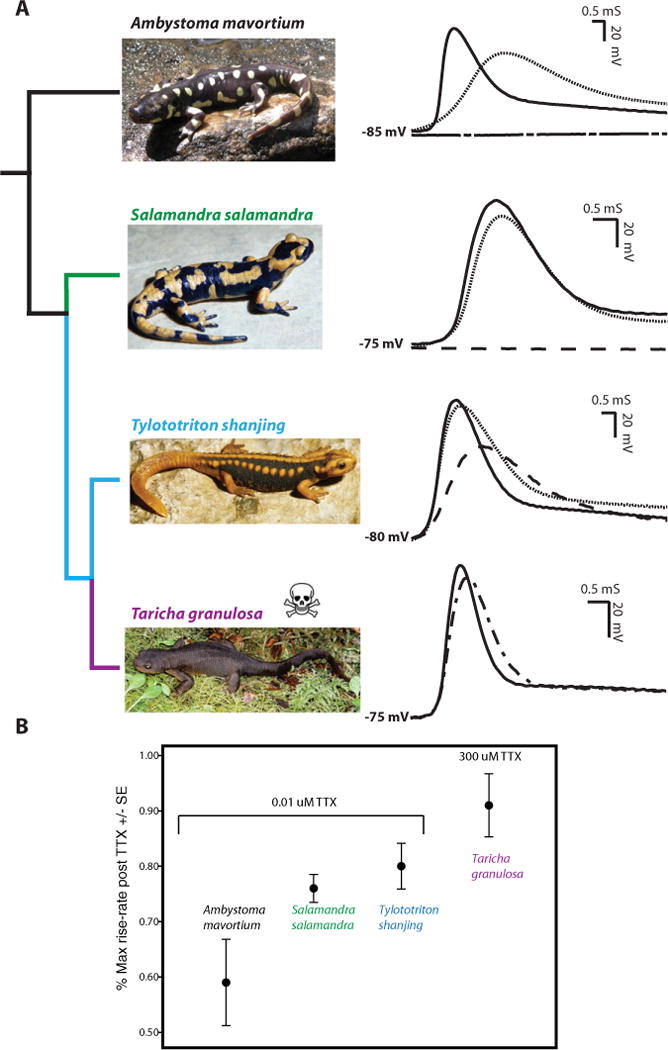Figure 1.

Evolutionary history of TTX resistance in salamanders. The differential resistance to tetrodotoxin as well as the evolutionary relationships of representative species from major salamandrid lineages and an out-group family (Ambystomatidae) are shown. (A) Intracellular action potentials (APs) recorded in skeletal muscle fibers from the indicated species exposed to a range of TTX concentrations. Control APs (no TTX) are shown in solid black lines. APs in the out-group species (Ambystoma mavortium) were completely blocked by 0.025 μM TTX (staggered dashed line), whereas 0.050 μM TTX (dashed line) was required to block APs in the true salamander (S. salamandra), but failed to block APs in the primitive newt (T. shanjing). Conversely, high concentrations of TTX (300 μM; dashed and dotted line) failed to block AP propagation in the TTX-bearing modern newt Taricha granulosa. Also shown are the effects of 0.010 μM TTX (dotted line) on APs from A. mavortium, S. salamandra, and T. shanjing demonstrating a progressive increase in TTX resistance across these species. (B) Comparison of the reductions in maximum rate of rise of the AP in 300 μM TTX for T. granulosa (9% ± 5.7 SE, n = 5) as well as differences (df = 2, F = 3.76, P = 0.06) in 0.010 μM TTX among A. mavortium (41% ± 7.8 SE, n = 5), S. salamandra (24% ± 2.5 SE, n = 3), and T. shanjing (20% ± 4.1 SE, n = 5). Line and font color refer to evolutionary lineages within the Salamandridae (true salamanders, green; primitive newts, blue; and modern newts, purple). Evolutionary relationships are inferred from Zhang et al. (2008) and Zhang and Wake (2009).
